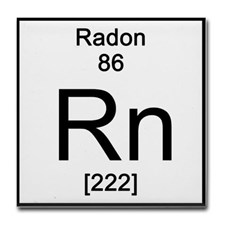University of Northampton researchers find no evidence of a link between environmental radon gas and multiple sclerosis
Date 15.02.2016

The University of Northampton’s Radon and Natural Radioactivity Research Group (RNRRG) undertakes fundamental studies into the impact of radon gas – an odourless, invisible, radioactive gas that is naturally present throughout much of the UK.
Using a novel methodology, researchers have recently completed a pilot study testing the hypothesis that radon – which is now known to be a major cause of lung cancer – can also trigger increased incidence of multiple sclerosis (MS).
The study, which explored the geographical relationship between domestic radon gas concentration and MS incidence, investigated around 5 per cent of the English population over an eight-year time-frame (20 million person-years), using a nationwide clinical extraction database.
The principal conclusion was that, although a weak correlation exists between raised domestic radon concentration and excess risk of developing MS, the effect is modest, not statistically significant, and therefore could be attributed to chance alone. However, the methodology developed by RNRRG will be applicable to future studies with larger patient numbers, such as will be available when the proposed UK national patient database becomes active.
The research project was funded by the University through the Research Excellence Framework grant scheme in 2013, with additional support from Northamptonshire NHS. The peer-reviewed journal paper, published in the April edition of the Journal of Environmental Radioactivity contains more details and completes this phase of the project.
Tony Denman, Emeritus Professor of Medical Physics, explained: “This paper is a culmination of over ten years collaboration between the School of Science and Technology, the School of Health, local and national NHS institutions and the team managing the clinical database, to develop a viable methodology for such analyses. We look forward to extending our work when larger patient databases become available.”
—
To read the report, visit the Journal of Environmental Radioactivity, Vol. 154, Pp. 1–14 (April 2016). The journal is available online.